We greatly hope that you will enjoy reading, and hopefully learning from, this article about these 3 Terrific Freshwater Turtles that we present herein. It was certainly a great pleasure for us to compile it for you, our readers. There’s clearly so much here to learn!
Obviously, these 3 Terrific Freshwater Turtles represent only the tiniest handful of the total number of turtles living in freshwater around the world. It’s our opinion, however, that these choices constitute good examples of the wonders found among these creatures.
Mata mata
Mata mata Facts
- Leading off this compendium of 3 Terrific Freshwater Turtles comes the fascinating animal with the unusual name, the Mata mata.
- The unique name for the turtle actually represents one of several versions of the same common name. The others consist of mata-mata and matamata. Its scientific name, meanwhile, remains that of the relatively simple to pronounce Chelus fimbriata.
- Regardless of the name you choose to use for it, the term refers to a highly distinctive species of freshwater turtle. In point of fact, it’s renowned for its unique appearance. This prompts some people to refer to the animal as a living fossil.
- The first official scientific recognition of this remarkable creature took place in the year 1741. At that time, the renowned French naturalist Pierre Barrere described it, but did not name it. Quite surprisingly, it has been renamed more than a dozen times.
- The amazing reptile also stands out for another reason. Unlike many species today, its population numbers appear to still be sufficient and stable. As a result, the IUCN lists the Mata mata as Least Concern on its Red List of Threatened Species.
- Given its particular habitat range, however, it must be considered to be at least potentially at risk in the future. One of the factors to be considered remains that of possible habitat loss. Its greatest threat, though, will likely come from climate change.
Mata mata Physical Description
Although the astounding Mata mata garners fully merited appreciation, it does not do so based on physical size. In those terms, the reptile only qualifies as roughly an average-sized variety of turtle. It’s in other manners that this particular turtle stands out.
In terms of dimensions, the carapace of a fully mature adult specimen averages about 18 in (45 cm) in length. Its weight, meanwhile, averages roughly 33 lb (15 kg) for the same adult individuals. The truly distinctive characteristics, though, appear in other areas.
The Mata mata also displays a very slight degree of the physiological trait of sexual dimorphism. In its case, this trait manifests itself in the appearance of the tail of the animal. Specifically, that of the adult male develops as somewhat thicker than that of the female.
Otherwise, the genders remain virtually indistinguishable. Its most notable characteristic, however, remains its remarkable shell. This develops an oblong shape, and a covering of sharp ridges. The precise reason for this eludes scientists studying the animal.
It also develops a relatively large, and, incredibly, a strongly flattened head, with a small horn on its snout. The carapace itself typically displays either a dark brown or black color. The neck, tail, head, and limbs, though, most commonly display a grayish brown shade.
- Kingdom: Animalia
- Phylum: Chordata
- Class: Reptilia
- Order: Testudines
- Family: Chelidae
- Genus: Chelus
- Species: C. fimbriata
Mata mata Distribution, Habitat, and Ecology
The astonishing creature known as the Mata mata inhabits a relatively extensive region of the world. This same region also happens to be one that abounds with an astounding variety and abundance of life. It evolved as endemic to specific portions of South America.
More precisely, though, it primarily appears in the expansive Amazon and Orinico Basins. This provides it with an enormous area in which to make its home. Even there, though, the truly remarkable turtle has very specific requirements for its choice of habitat.
This creature prefers to live in relatively slow-moving, blackwater streams. It will also, though, appear in other, similar environments. These most commonly include such areas as marshes, larger stagnant pools, and even occasionally certain swampy areas.
Being primarily an aquatic species, it spends the majority of its time submerged in water, with only its snout extending. This skilled hunter snaps its powerful jaws closed on any hapless small fish or invertebrate that ventures to close, swallowing it whole.
In its region, the mighty Mata mata nests between October and December, after mating. The female typically lays between 12 – 28 delicate, spherical-shaped eggs. These she deposits in the nest constructed by, and watched over by, both parents until hatching occurs.
Mary River Turtle
Mary River Turtle Facts
- Next up among our choices for inclusion in this article about 3 Terrific Freshwater Turtles comes the extraordinary reptile known as the Mary River Turtle.
- This intriguing product of Nature and evolution most frequently goes by the somewhat informative common name for excellent reasons. For the moment, unlike many of its brethren, the remarkable reptile has no other generally accepted general name.
- Scientific professionals, such as researchers, however, most often refer to it by the its formal scientific name. That, though, is the less easily pronounced term of Elusor macrurus. Regardless of the name used, however, it remains a most unusual creature.
- The researchers John Cann and John Legler hold the distinction of making the first formal recognition of the animal as a separate and distinct species. This scientifically noteworthy action, however, only occurred in very recent time, in the year 1994, in fact.
- Lamentably, though, the impressive Mary River Turtle does not appear to have either a large or extensively spread population base. Due to this, the IUCN presently lists the animal as Endangered. That status currently appears on the organization’s Red List.
- Given the nature and location of its known habitat range, habitat loss understandably poses a very serious threat to the continued existence of the Mary River Turtle. The greatest danger it faces, though, most likely consists of the effects of climate change.
Mary River Turtle Physical Description
The eye-catching Mary River Turtle clearly draws the attention of those who encounter it. It actually has several characteristics that make it an intriguing reptile. Most people consider its sheer appearance, however, to be its most astonishing physical feature.
The sheer size of the turtle also deserves mention, though. In fact, while no giant, it represents one of the largest of all turtles in its region of the world. Like many related creatures, it further displays a marked degree of the physiological trait of sexual dimorphism.
In its case, however, the males of the species typically attain a greater size than their female counterparts. Among many turtles, the opposite pattern holds true. Males reach an average 16.5 in (42 cm) in carapace length, and an impressive weight of 12.1 lb (5.44 kg).
The females of the remarkable species, meanwhile, usually reach carapace lengths of only around 13.4 in (34 cm), and weights of about 7.7 lb (3.5 kg). Exceptional specimens of both genders do occasionally occur, however. Some measure up to 19.7 in (50 cm).
Otherwise the genders appear indistinguishable. The carapace generally has an elongatged shape. Overall color, meanwhile, tends to be combinations of shades of reddish-brown to black. Some individuals also develop growths of algae on their heads!
- Kingdom: Animalia
- Phylum: Chordata
- Class: Reptilia
- Order: Testudines
- Family: Chelidae
- Genus: Elusor
- Species: E. macrurus
Mary River Turtle Distribution, Habitat, and Ecology
Unfortunately, both for the Mary River Turtle itself, as well as those of us who appreciate Nature, it has an extremely restricted habitat range. For now, the magnificent animal only appears to live in one tiny segment of the always fascinating continent of Australia.
Even there, however, the unusual reptile seems to be limited to only one highly specific region. The name itself actually supplies a hint of that location. That’s because the known habitat of the Endangered reptile consists of the small Mary River, in southeast Queensland.
Yet, even within this already highly limited zone of habitation, the turtle displays very specific preferences in terms of where it lives. Virtually all known specimens make their home in regions of strongly flowing, well oxygenated sections of the river and its streams.
Researchers currently know very little about the ecology of this marvel of Nature. Those studying the species do know, however, that although it spends most of its time in the water, it makes its nests on land. These rarely appear very far from the water, though.
Like most of its relatives, it does appear that it evolved as an omnivorous creature. Among the vegetation it consumes, algae seems to predominate its choices. Its animal prey, meanwhile, largely consists of such small choices as molluscs and other small species.
The lifespan of the Mary River Turtle remains undetermined, for the moment. Interestingly, though, females tend to reach physical maturity slightly faster than the males. Females attain this state in approximately 25 years, but males typically take roughly 30 years.
Cantor’s Giant Softshell Turtle
Cantor’s Giant Softshell Turtle Facts
- And last, but certainly not least, among our choices for inclusion in this compilation of 3 Terrific Freshwater Turtles comes the amazing Cantor’s Giant Freshwater Turtle.
- This impressive, not to mention distinctive, creature most frequently goes by the informative common name for wholly understandable reasons. It also goes by several other alternate names, though, much like many species or reptile around the world.
- Its two other generally accepted common names, however, remain just as descriptive and informative as the primary one. These less frequently used, but still applicable, terms consist of the Asian giant softshell turtle and frog-faced softshell turtle.
- Scientific professionals, such as researchers, meanwhile, generally refer to the animal by its formal scientific name. That, though, is the somewhat tongue-twisting name of the Pelochelys cantorii. By any of these terms, it represents an amazing species.
- The first recorded formal recognition of the creature as a separate and distinct species, furthermore, took place in the year 1864. The respected British zoologist, John Edward Gray made that noteworthy contribution to the annals of science.
- Regrettably, the population of the Cantor’s Giant Softshell Turtle appears to be in decline. For that reason, the IUCN lists the species as Endangered, on its Red List. The primary threats to its existence seem to consist of habitat loss and hunting.
Cantor’s Giant Softshell Turtle Physical Description
The amazing Cantor’s Giant Softhsell Turtle easily impresses those fortunate enough to encounter it. It does so, however, due to more factors that simply its size. That characteristic nonetheless remains its most noteworthy attribute, in the minds of most people.
The animal also displays a degree of the physiological characteristic of sexual dimorphism. The degree to which this trait develops, however, remains extremely minor. It’s reflected in the nature of the tail. That of the male develops as thicker than the females’.
In terms of simple overall size, though, both genders attain virtually the same average measurements. The carapace typically averages between 28 – 39 in (71 – 99 cm). Individuals also reach an average weight of approximately 220 lb (100 kg), though exceptions occur.
The carapace itself also has a relatively smooth texture, with this typically presenting an olive green color. Yet immature individuals often display dark mottling and yellow coloring. This characteristic appears primarily present around the edges of the carapace.
The amazing Cantor’s Giant Softshell Turtle also has a broad skull, with relatively small eyes. These appear located close to the tip of the snout. When it reproduces, the female typically lays between 20-28 eggs at a time, between the months of February and March.
- Kingdom: Animalia
- Phylum: Chordata
- Class: Reptilia
- Order: Testudines
- Family: Trionychidae
- Genus: Pelochelys
- Species: P. cantorii
Cantor’s Giant Softshell Turtle Distribution, Habitat, and Ecology
Unfortunately, the fabulous cantor’s Giant Softshell Turtle evolved as native to a restricted region of the world. Even more regrettably, that zone’s now been reduced even more. Currently, it appears in only a few select sections of the contiinent and region of Asia.
The amazingly evolved reptile now primarily occurs only in the countries of India, Burma, and Thailand. Individuals do also occasionally appear in Cambodia, Vietnam, China, and Java. On occasion, individuals even appear in neighboring areas as well.
It remains undetermined if these are indigenous to these areas, however, leading to even more confusion. The remarkable reptile lives almost exclusively in freshwater streams and rivers. These bodies of water must also be relatively slow moving.
Although populations of this species most often live inland, there presently remains some evidence that its range also includes coastal regions as well. Ongoing investigations, however, continue to attempt clarify this situation, to better understand the creature.
The primarily carnivorous Cantor’s Giant Softshell Turtle also seems to be a highly effective ambush predator. It feeds primarily on mollusks, fish, and small crustaceans. Specimens occasionally will also consume small quantities of various aquatic plants.
3 Terrific Freshwater Turtles
We sincerely hope that you have thoroughly enjoyed perusing this article about 3 Terrific Freshwater Turtles. Certainly, these remarkable animals deserve our appreciation, along with their numerous relatives around the globe. Each plays its own role in Nature.
Regretfully, however, many of their relatives, wherever they live, now find themselves facing dire situations. It’s up to each and every one of us to do all that we can to protect and preserve these products of millions of years of evolutinoary processes.
Check out our other articles on 5 Amazing Andean Species, 5 Rare Mind-Blowing Cloud Types, 4 North Carolina Natural Marvels, Earth’s Many Magical Moths
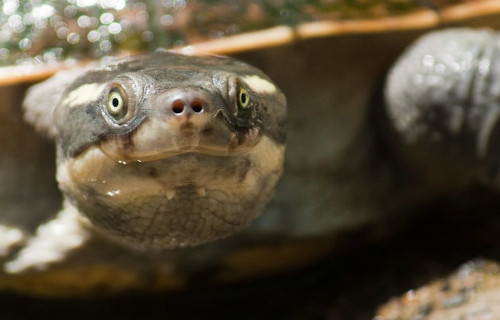
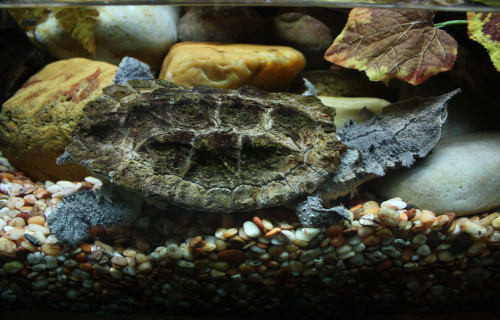
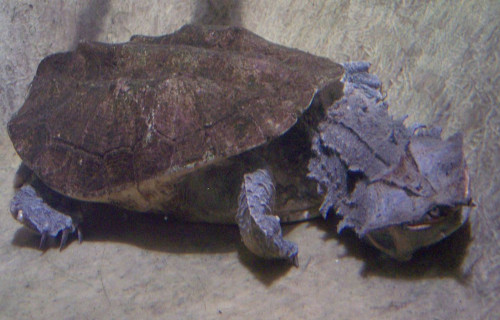
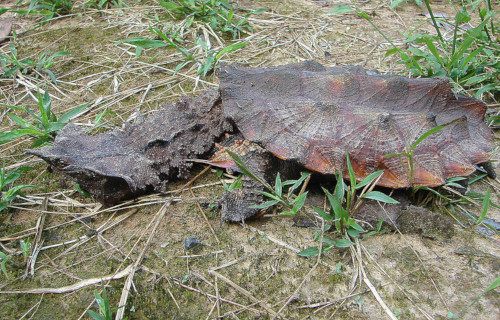
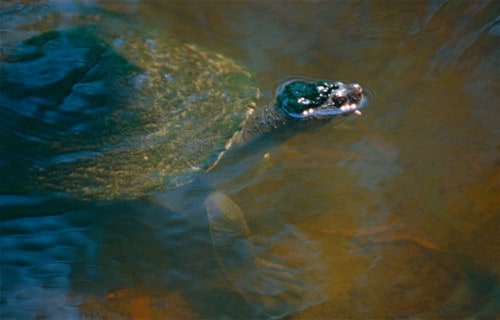
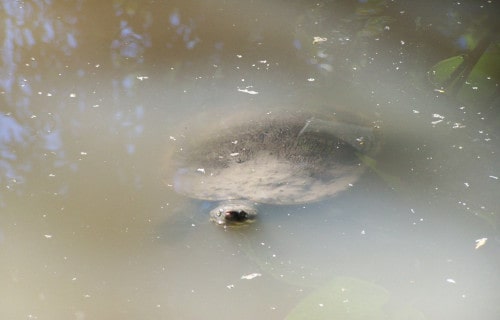
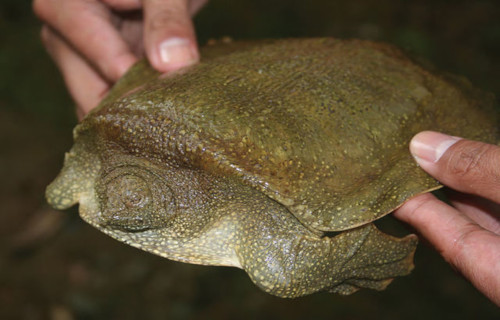
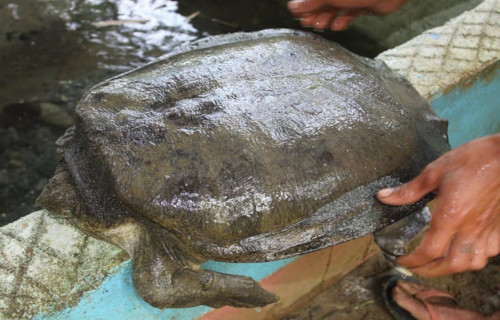









Leave a Reply